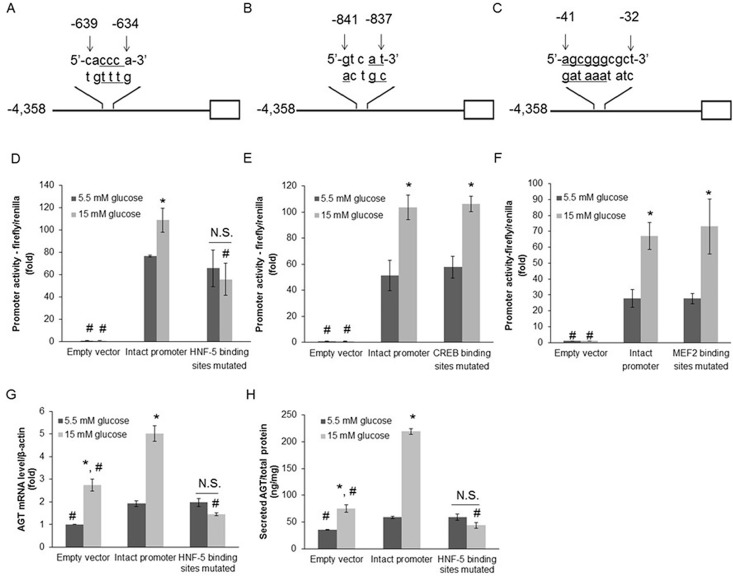Fig 4. Mutation in HNF-5 binding sites reduces the effects of high glucose on AGT promoter activity as well as AGT mRNA and secretion levels.
(A, B and C) Constructs with respective mutation of HNF-5 (A), CREB (B) or MEF2 (C) binding sites in main human AGT promoter sequences (AGT_-4,358/+122). Within binding sites, the underlined base pairs were substituted by mutagenesis. Horizontal line represents human AGT_-4,358/+122 with relevant mutation. Open box represents the luciferase reporter. (D, E and F) Effects of high glucose treatment on AGT promoter activity in HK-2 cells, which were transfected with either intact or relevant binding sites mutated construct of human AGT_-4,358/+122. Compared with normal glucose (5.5 mM) treatment, high glucose (15.0 mM) significantly augmented AGT promoter activity of HK-2 cells transfected with the intact construct of human AGT_-4,358/+122 (D, E and F). Furthermore, the above effect was abolished in HK-2 cells with mutated HNF-5 binding sites (D), while not affected by the binding sites mutation of CREB (E) or MEF2 (F). g: guanine; a: adenine; c: cytosine; t: thymine. Data are expressed as relative values to the empty vector transfection group under the same glucose concentration. (G) Mutation in HNF-5 binding sites attenuated the effects of high glucose on AGT mRNA level. Data are expressed as relative values to the empty vector transfection group with normal glucose. (H) Mutation in HNF-5 binding sites attenuated the effects of high glucose on AGT secretion level. Values are presented as mean ± SEM. *P<0.05 vs. normal glucose (5.5 mM) group with the same construct; #P<0.05 vs. intact human AGT_-4,358/+122 transfection group under the same glucose concentration; N.S.: no significant difference. N = 3~6.

